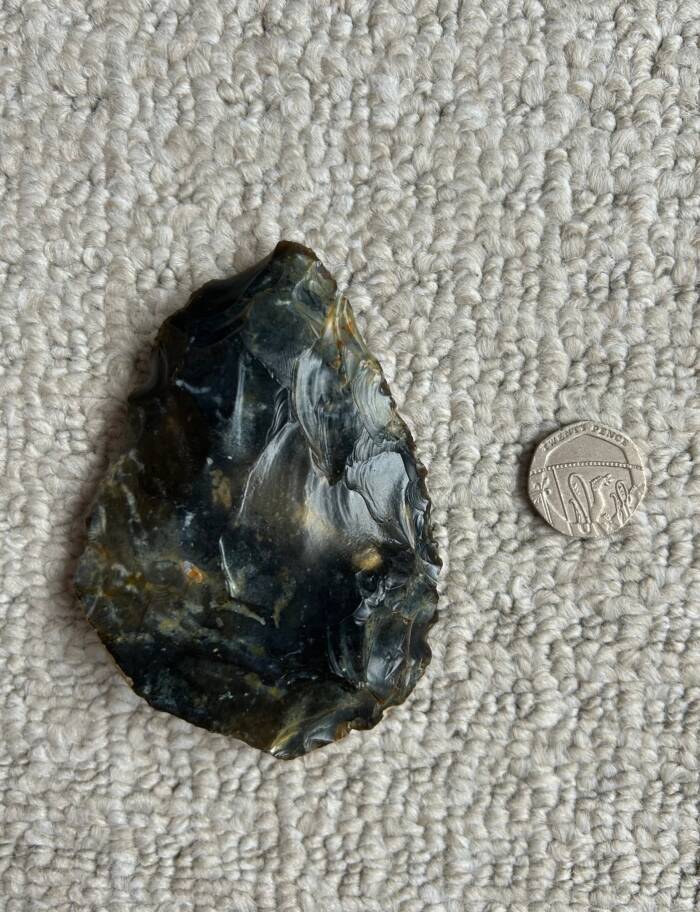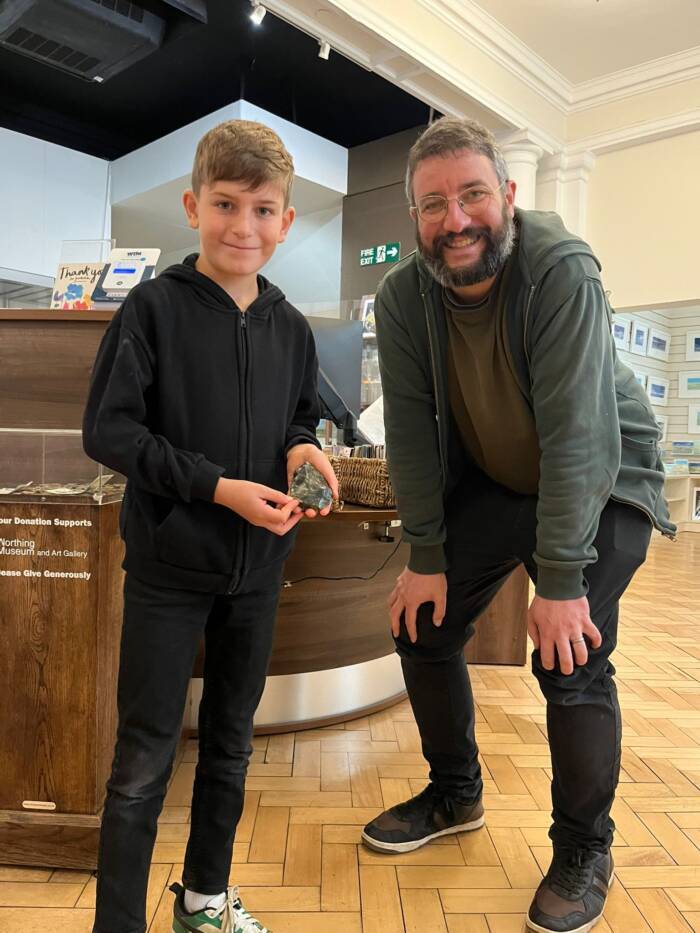The Six-Year-Old Who Found A Neanderthal Hand Ax On A Beach
In 2021, six-year-old Ben Witten was visiting Shoreham Beach in Sussex, England, when he took notice of an especially shiny object among the otherwise ordinary pebbles scattered along the shore.

Worthing Museum/FacebookThe Neanderthal hand ax sat in Ben Witten’s bedroom for years.
“I was looking around and I saw this shiny flint rock. I just thought it looked different to all the other different pebbles and stones,” Ben said of the initial discovery.
For three years, the mysterious stone sat in his bedroom, occasionally getting lost and found again. The young boy had no clue he was living with one of the rarest archaeological finds in England.
The truth about Ben’s beach treasure emerged during a family visit to Worthing Museum in southern England in late 2024. While exploring the Stone Age exhibit, Ben spotted prehistoric hand axes that looked remarkably similar to his bedroom rock. The resemblance was too uncanny to ignore.
Intrigued by the museum display, he and his mother decided to email photographs of their mysterious rock to James Sainsbury, the museum’s curator of archaeology.
Sainsbury wasn’t expecting much when he opened the email, but what he saw left him stunned. Ben’s casual beach find was actually a Neanderthal hand ax, created between 40,000 and 60,000 years ago during the Middle Paleolithic era. The artifact showed very little wear and represented an extraordinarily rare discovery — so rare that most qualified archaeologists never find one themselves.
The hand ax’s discovery location above the high tide line puzzled experts, since tens of thousands of years ago, the coastline would have been much farther inland. Researchers theorized that the tool either remained where a Neanderthal originally left it or had been deposited there when offshore materials were dredged onto the beach to prevent erosion.

Worthing Museum/FacebookBen Witten poses with his discovery alongside James Sainsbury of the Worthing Museum.
Initially, Ben was reluctant to part with his prized possession. “I did want to keep it,” he admitted. However, after meeting with Sainsbury and learning about the artifact’s significance, he agreed to loan it to the museum so others could appreciate it.
“They said it’s their best find in 10 years,” Ben reported proudly. “Now it’s in a case in the museum. I was really excited, my heart was beating really fast.”
The hand ax went on display at Worthing Museum as part of their Stone Age exhibition, where it joined the very artifacts that had inspired Ben to question his own discovery. The museum planned to keep it on display through at least February 2025, after which Ben could reclaim it if he chose.





